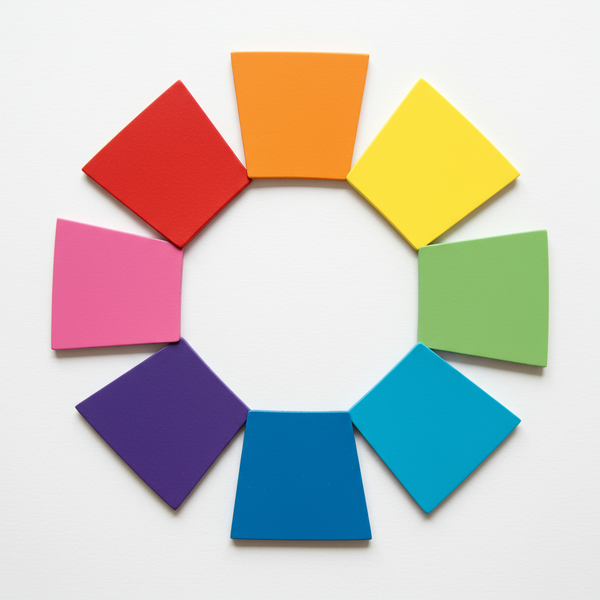The 5 Levels of Development in the Enneagram

Our core Enneagram type provides a basic personality framework, yet our manifestation of that type constantly shifts, evolving through various states of integration and disintegration. This dynamic nature means our essential identity remains consistent, but how we engage with the world, process experiences, and express our inherent gifts varies significantly based on our inner state.
Curious about your core motivations? Chat with Celeste to better understand your Enneagram type.
Understanding the Spectrum: Healthy, Average, and Unhealthy Levels
The Enneagram maps nine distinct Levels of Development for each type, providing a dynamic roadmap for personal growth. These nine levels are grouped into three overarching categories, illuminating how our core motivations can lead us towards greater self-mastery or deeper struggle. The Healthy Levels, spanning Levels 1-3, signify a state of high functioning, inner freedom, and positive impact on the world. The Average Levels, encompassing Levels 4-6, represent typical expressions of our type, complete with strengths and challenges. The Unhealthy Levels, comprising Levels 7-9, indicate a state of significant internal distress, diminished capacity, and potential for destructive behaviors, both towards ourselves and others. Each level offers a clear snapshot of our psychological state, directly reflecting our self-awareness and our ability to navigate life's complexities.
A Deep Dive into Type One: The Reformer's Journey Through the Levels
Let's illuminate this spectrum through the lens of Enneagram Type One, often known as The Reformer. Ones possess a fundamental desire for integrity, truth, and improvement, driven by a deep inner sense of right and wrong. Their journey through the Levels of Development showcases a spectrum from wisdom to rigidity.
- Healthy Type One (Levels 1-3): Wise and Discerning. At their most integrated, Type Ones embody profound wisdom and discerning judgment. They are exceptionally principled, yet remain realistic and tolerant, understanding that perfection is an ideal, not a constant reality. These Ones are fair, objective, and inspire others through their impeccable ethics and dedication to justice. They act with grace and integrity, consistently striving for what is good and true, without succumbing to self-righteousness or rigid dogmatism. Their desire for improvement is channeled constructively, impacting the world positively and effectively. They are beacons of integrity, combining high standards with profound patience and acceptance.
- Average Type One (Levels 4-6): Critical and Resentful. As Type Ones move into the average levels, their core desire for perfection often translates into a more critical and demanding inner landscape. They become highly principled, striving for excellence and correctness in all things, but also prone to finding fault with themselves and others. Their ideals become more rigid, leading to frustration and resentment when reality inevitably falls short. They are conscientious and dedicated, working hard to improve situations, but often express their disapproval openly, becoming more opinionated and defensive. They believe they know what is right and feel compelled to correct perceived wrongs, which can manifest as an underlying current of anger and a sense of being perpetually burdened by others' imperfections.
- Unhealthy Type One (Levels 7-9): Punitive and Self-Righteous. At the unhealthy levels, the Type One's inner critic grows overwhelming and punitive. They become rigid, intolerant, and dogmatic, convinced of their own infallible rightness and condemning of anyone who falls short of their impossibly high standards. Their anger becomes explosive and irrational, often leading to severe self-criticism, guilt, and self-recrimination, which they may project onto others. They become highly judgmental, moralistic, and can even exhibit cruel behavior in their attempts to "reform" or punish others for perceived moral failings. They are gripped by an intense inner torment, unable to find peace or acceptance, consumed by self-righteousness and the need to control.
Self-Awareness: The Catalyst for Upward Movement
The power of the Levels of Development lies in their capacity to illustrate our personal journey and offer a clear path forward. Self-awareness stands as the indispensable key to navigating these levels, enabling us to move towards greater health and integration. Identifying our current level requires honest introspection: recognizing our typical emotional states, our reactions under stress, and the underlying motivations driving our behavior. This conscious acknowledgment of where we are provides the power to make different choices. By observing our patterns without judgment, we gain insight into the mechanisms of our type, understanding why we react as we do. This self-knowledge allows us to interrupt unhelpful cycles, challenge restrictive beliefs, and consciously choose responses aligned with our higher self, actively pulling us upwards through the levels.
An Empowering Path for Growth Within Your Type
The Enneagram's Levels of Development offer far more than mere categorization; they provide an empowering, actionable framework for lifelong personal growth. Understanding your type's unique journey through these levels transforms your Enneagram insights into a dynamic roadmap. You gain clarity on the positive attributes awaiting you at the higher levels, alongside a keen awareness of the pitfalls that can emerge as you move downwards. This knowledge provides you with the power to identify specific behaviors and thought patterns that either uplift you or hold you back. The Levels demonstrate that personal development is an ongoing process of conscious choice and integration, not a fixed destination.




